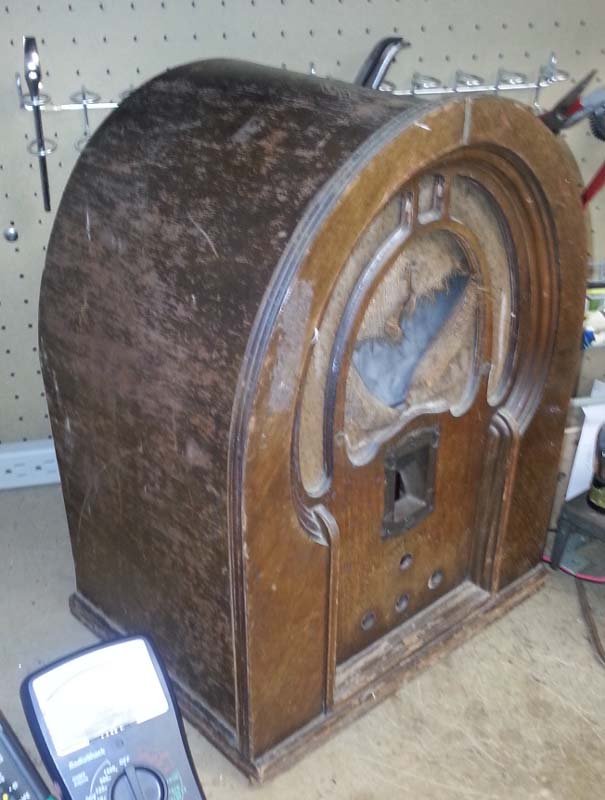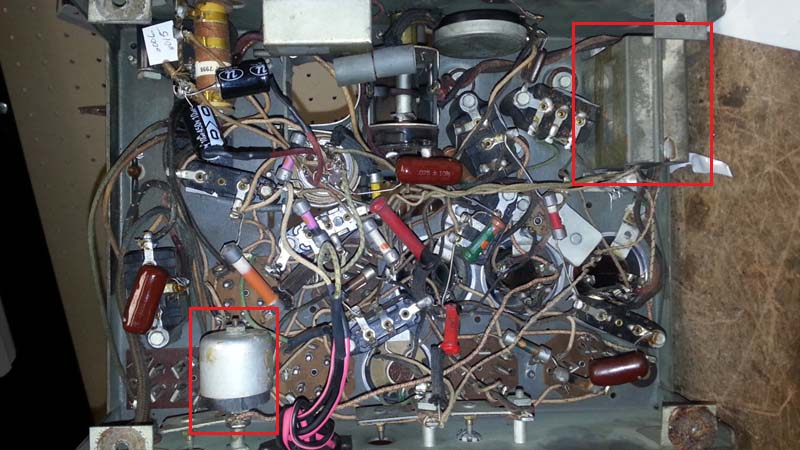03-05-2015, 11:18 PM
I have started to restore a Model 19 Code 126 Cathedral that I picked up at a thrift store over a year ago. The electronics are really not in bad shape.
I have been spending a lot of time just tracing wiring and trying to understand where the parts are. I have replaced a couple of the bakelite condenser blocks and trying to move onto the others. I am not choosing to restuff, rather replacing each using a small terminal strip with the capacitors soldered in. The space that it opens opens was is just too tempting. It seems so much easier to trace the wiring.
BTW, in the picture, those maroon mylar caps are not mine. It seems the previous owner tried experiementing by jumping several of the bakelite blocks with those capacitors. I don't know what they strategy was there, but I will be removing those.
I have been reading everything I can on this site and others about this radio.
At this point, I have one question. What is meant by "autodyne?" Why did Philco use this design? What were the advantages and disadvantages, and what can I expect to run into because of it?
Thanks!
Mark K8KZ


I have been spending a lot of time just tracing wiring and trying to understand where the parts are. I have replaced a couple of the bakelite condenser blocks and trying to move onto the others. I am not choosing to restuff, rather replacing each using a small terminal strip with the capacitors soldered in. The space that it opens opens was is just too tempting. It seems so much easier to trace the wiring.
BTW, in the picture, those maroon mylar caps are not mine. It seems the previous owner tried experiementing by jumping several of the bakelite blocks with those capacitors. I don't know what they strategy was there, but I will be removing those.
I have been reading everything I can on this site and others about this radio.
At this point, I have one question. What is meant by "autodyne?" Why did Philco use this design? What were the advantages and disadvantages, and what can I expect to run into because of it?
Thanks!
Mark K8KZ



